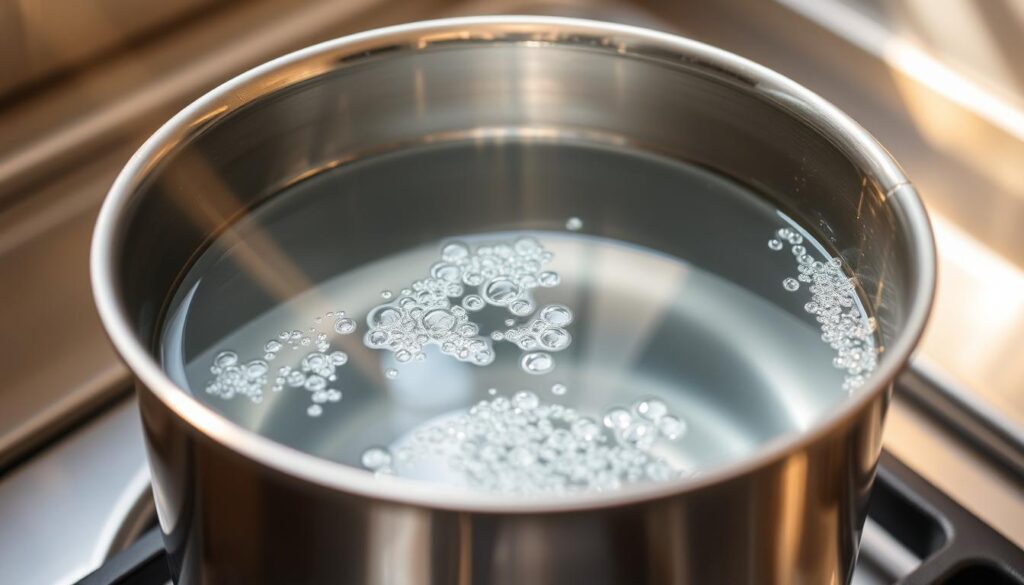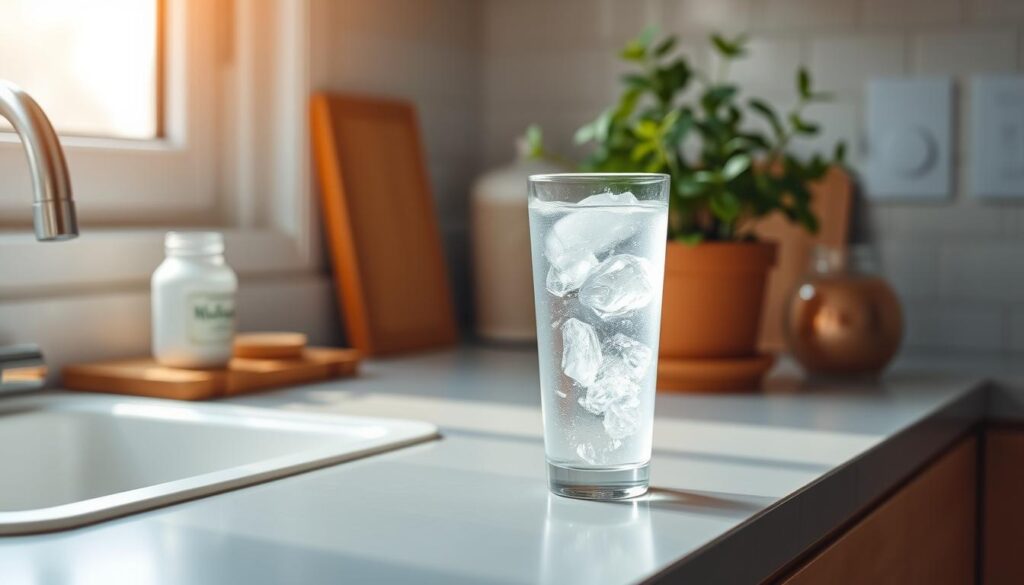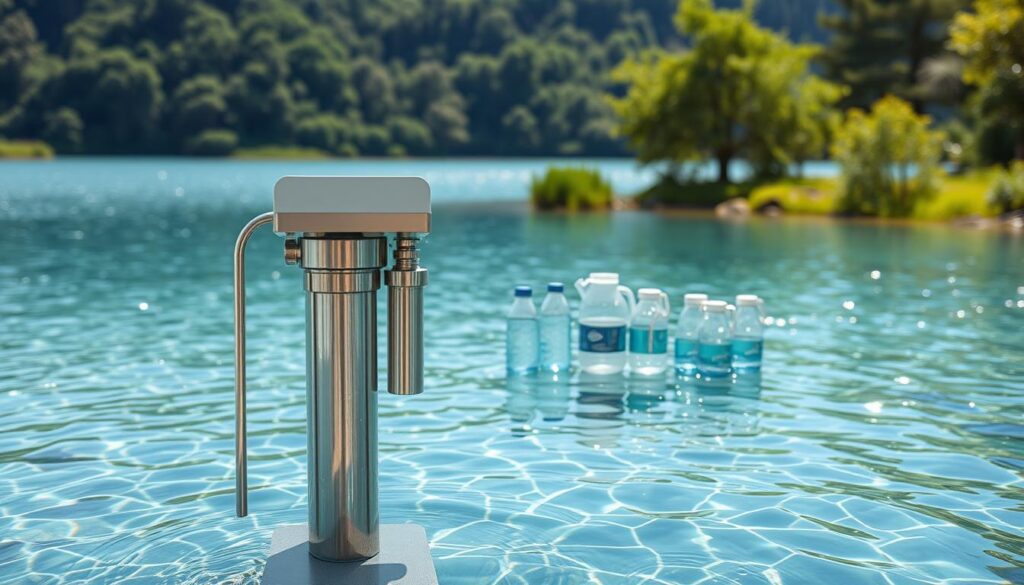As a home cook, I’ve learned that mastering the art of boiling is key. It opens up a world of culinary possibilities. From cooking pasta and grains to preparing potatoes, this simple technique is a staple in many kitchens.
I remember the first time I successfully boiled water to make a delicious meal. It was a moment of triumph that laid the foundation for my future cooking endeavors. In this article, I’ll share my foolproof method for boiling water. I’ll also include essential safety tips to ensure a safe and enjoyable cooking experience.
Key Takeaways
- Understanding the basics of boiling is key for cooking a variety of dishes.
- A foolproof method for boiling water can be achieved with the right techniques.
- Boiling water safety tips are essential to prevent accidents in the kitchen.
- Mastering boiling techniques can elevate your cooking skills.
- Simple steps can be taken to ensure safe and effective boiling.
Understanding the Basics of Boiling Water
Knowing how to boil water is key to cooking well. Boiling water is a basic skill in cooking and everyday life. Understanding the basics can really help.
The Science Behind Boiling
Boiling happens when a liquid gets hot enough to turn into vapor. For water, this happens at 212 degrees Fahrenheit at sea level. But, the temperature changes with altitude and air pressure.
At higher places, water boils at a lower temperature. This is because there’s less air pressure.
Boiling water creates bubbles as it heats up. These bubbles form because the heat makes the water molecules move fast. As more bubbles rise, they make the water boil.
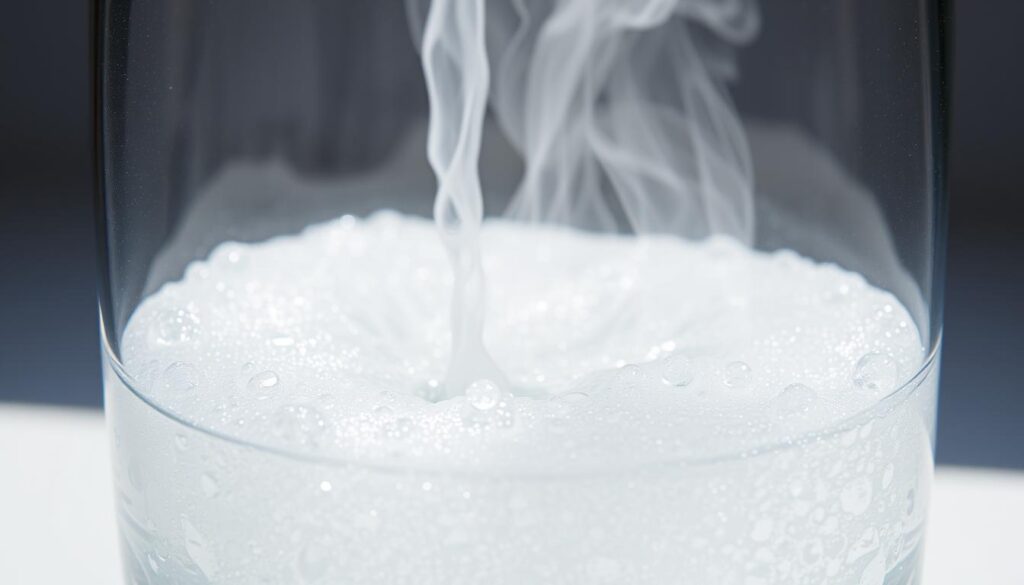
Different Methods of Boiling
There are many ways to boil water, each with its own benefits. The most common are using a kettle or a pot on a stovetop. Kettles boil water fast, while pots are good for bigger amounts.
- Using a Kettle: Kettles are made to boil water quickly. They use less energy than stovetops and come in electric or stovetop types.
- Boiling on a Stovetop: Boiling water on a stovetop means using a pot over a flame. It lets you control the boil better and works for all pot sizes.
Both methods work well. Your choice depends on what you like, how much water you need, and what you have.
Essential Tools for Boiling Water
Having the right tools makes boiling water easy. The equipment you choose affects how well and safely you boil water.
Choosing the right pot or kettle is key. The debate between them is ongoing, each with its own benefits.
Choosing the Right Pot
It’s important to pick the right pot for boiling water. I look at material, size, and how well it conducts heat. Stainless steel pots are tough and don’t rust, while copper pots heat up fast.
| Material | Heat Conductivity | Durability |
|---|---|---|
| Stainless Steel | Good | Excellent |
| Copper | Excellent | Good |
| Aluminum | Excellent | Fair |
Using a Kettle vs. Pot
When choosing between a kettle and a pot, I think about the task. Kettles are faster for boiling water, perfect for tea or instant coffee. Pots are more versatile and good for many cooking tasks.
Kettles are often better for boiling small amounts of water. But for big amounts, a pot on the stovetop or in the microwave works better.
In conclusion, the choice between a kettle and a pot depends on your needs. By picking the right tool, you ensure a safe and efficient boil.
Preparing Water for Boiling
The journey to perfectly boiled water starts with understanding water quality and accurate measurement. Boiling water is more than just turning the heat on; it’s a process that begins with the water itself.
Water quality plays a critical role in the boiling process. As I always say, “The quality of the water you boil directly affects the outcome.” Boiling water can kill bacteria and other pathogens, making it safe for drinking. This is one of the significant benefits of boiling water, which is vital in areas where water quality is questionable.
Water Quality Matters
Using clean water is essential for the best results when boiling. If the water contains impurities or pathogens, boiling can make it safe. But, it’s important to start with the cleanest water possible. Health experts say boiling is one of the most effective ways to make water safe to drink, showing the importance of boiling water and health.
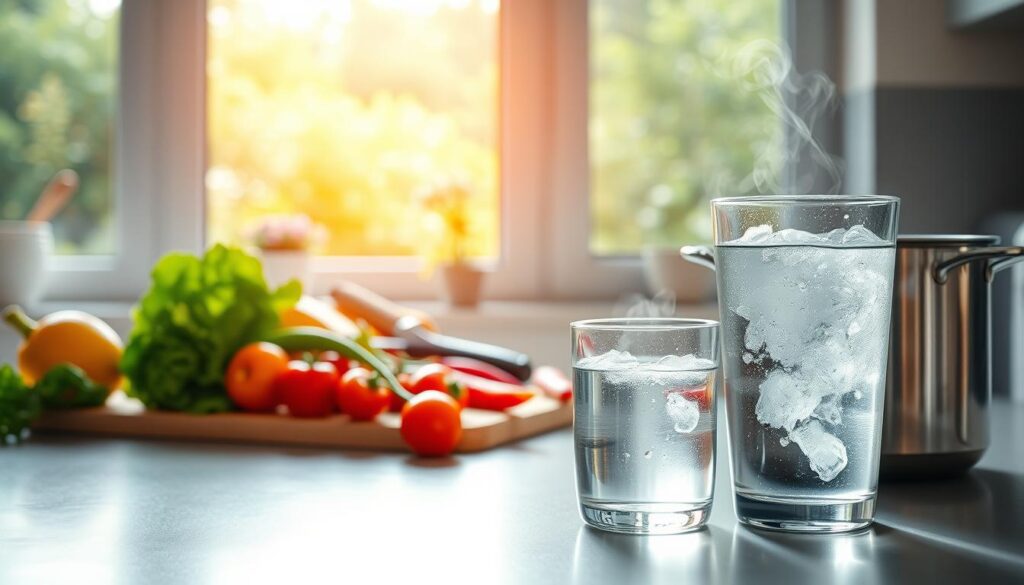
Measuring Water Accurately
Accurate measurement of water is also key, mainly when cooking. Recipes often need specific amounts of water for the right consistency or texture. For example, cooking pasta or rice requires precise water measurement to avoid undercooking or overcooking. Accurate water measurement ensures your dishes turn out as expected, making it a critical step in cooking.
In conclusion, preparing water for boiling is more than just filling a pot with water. It requires attention to the water’s quality and quantity. By focusing on these aspects, you can ensure your boiled water is safe to drink and suitable for various culinary uses.
Heating Sources: What Works Best?
Choosing the right heating source for boiling water is key. It affects both speed and safety in the kitchen. Knowing the strengths and weaknesses of different sources is important.
Gas vs. Electric Stoves
The debate between gas and electric stoves is ongoing. For boiling water, gas stoves are often preferred. They offer precise and immediate heat control, which is important for the right boiling water temperature.
Electric stoves, while slower, have become more efficient. They are a good alternative for boiling water.
Energy efficiency and cost are important factors. Gas stoves are better for large amounts of water. Electric stoves are better for small amounts. For more on finding safe drinking water, check out my guide on finding safe drinking water for your.
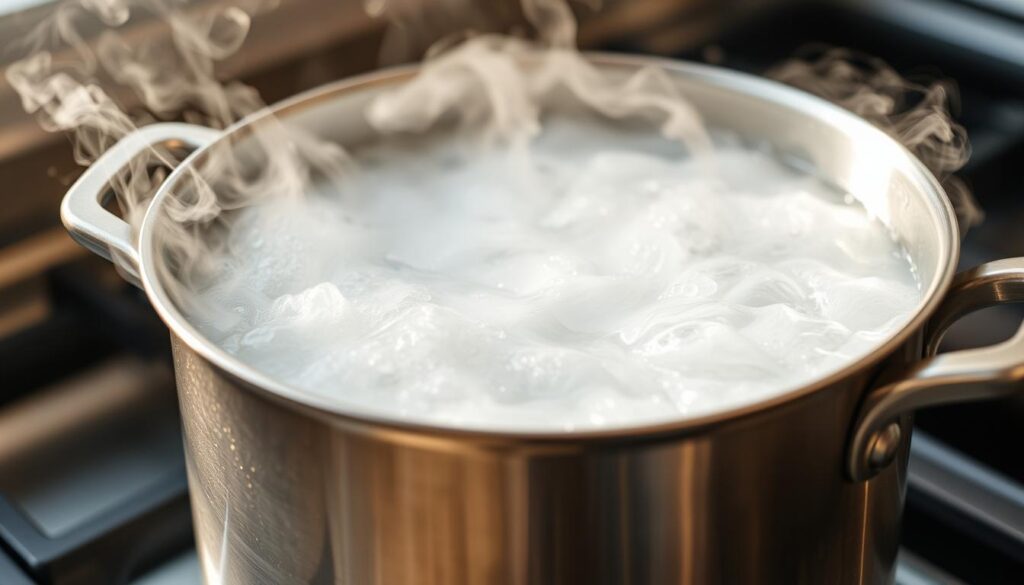
Alternative Heating Methods
There are other ways to boil water, each with its own benefits and considerations. Microwaving is quick but requires careful attention to boiling water safety tips. It can lead to violent boiling or even explosions if the water is disturbed.
Electric kettles and induction cooktops are also options. They are designed for boiling water and have safety features. When choosing an alternative, consider energy efficiency, safety features, and your specific needs.
The Boiling Process Explained
Boiling water is more than just heating it. It’s about knowing the stages water goes through until it boils.
When you heat water, you’ll see different stages as it gets hotter. First, small bubbles form at the bottom of the pot. This shows the water is warming up.
Identifying the Boil Point
The boil point is when water boils vigorously. You’ll see big bubbles rising fast and popping. For water at sea level, this happens at 212°F (100°C). But, the boiling point changes with altitude because of pressure changes.
Maintaining a Rolling Boil
After water boils, keeping a rolling boil is key for some cooking. A rolling boil means water boils constantly and strongly. To keep it, make sure the heat is right and adjust as needed.
Lowering the heat after a rolling boil helps save energy and keeps water boiling. But, be careful not to let water spill over or turn it into a simmer. This can mess up your cooking or sterilization.
Safety Tips for Boiling Water
Boiling water safely is as important as doing it well. When you handle boiling water, watch out for kitchen hazards.
Burns and spills are big risks with boiling water. To avoid these, handle hot pots and pans carefully. Always use oven mitts or pot holders to protect your hands.
Preventing Burns and Spills
Never leave a boiling pot alone on the stove. Keep a safe distance from the pot’s edge to avoid accidents. Also, be careful when moving around the kitchen with hot water.
Using the right tools can prevent burns. For example, pots with stay-cool handles are safer. Keeping an eye on your surroundings and keeping kids away from boiling areas also helps a lot.
Using Lids Safely
Lids are key to boiling water safety. They help keep water in the pot, preventing spills. But, be careful when removing a lid from a boiling pot. Slowly remove the lid and tilt it away from you to avoid steam burns.
Lids also help keep the boiling process safe. They reduce the chance of water overflowing when it boils. By following these tips, you can make boiling water safer.
By following these safety tips, you can make your cooking safer. Remember, safety in the kitchen is as important as the cooking itself.
Common Mistakes When Boiling Water
Boiling water might seem simple, but it can be dangerous if done wrong. I’ve seen many times when boiling water goes wrong because of a few common mistakes.
Two big mistakes are overfilling the pot and forgetting about the water. Let’s look at these mistakes and what can happen.
Overfilling and Its Consequences
Overfilling a pot can cause a mess and even accidents. When water boils, it expands and can spill, leading to burns or scalds. As John Smith, a culinary expert, notes, “Overfilling the pot is a common mistake that can be dangerous.”
To avoid this, leave some space between the water and the pot’s top. This lets the water expand safely, reducing spill risks.
Forgetting About the Water
Forgetting about boiling water is another mistake. It can cause the water to boil dry, damaging the pot or stove, or even start a fire. As I always say, “Attention to detail is key when boiling water.”
To stay safe, keep an eye on the pot. Adjust the heat to keep the water boiling safely.
By being careful of these mistakes and avoiding them, you can have a safe and successful boiling experience.
Creative Uses for Boiled Water
Boiled water is more than just for cooking. It’s used in many parts of our daily lives.
Cooking and Baking Applications
Boiled water is key in the kitchen. It helps make soups, pasta, rice, and grains. Using the right boiling methods ensures food is cooked right and safe. It’s also used to make steam for bread and pastries.
Some common uses include:
- Preparing soups and broths
- Cooking pasta, rice, and other grains
- Making tea and coffee
Hygiene and Health Benefits
Boiled water is also great for keeping things clean. It’s used to sterilize tools and utensils in homes and hospitals. This helps stop infections and keeps things clean.
Health benefits include:
- Safe drinking water, even when tap water isn’t good
- Sterilizing medical tools and baby bottles
- Keeping clean, like washing wounds or contact lenses
Boiled water is vital, not just for cooking. It’s also key for staying healthy and clean. It plays a big role in our daily lives.
Conclusion: Perfecting the Art of Boiling Water
Learning to boil water is a key skill in cooking. We’ve looked at the basics, tools needed, and different ways to heat water. This skill is vital for many recipes.
Knowing how to boil water right makes cooking safer and quicker. It doesn’t matter if you use a gas or electric stove. The goal is to keep the water boiling while staying safe.
As you get better at boiling water, you’ll use this skill in many ways. It’s useful for cooking and even cleaning your kitchen tools. With practice, you’ll improve your cooking and make it more enjoyable.
FAQ
What is the boiling point of water?
Water boils at 212°F (100°C) at sea level. But, it can change with altitude and pressure.
How do I boil water safely in a microwave?
Use a safe container for microwaving. Heat in short bursts, checking until boiling. Be careful when taking it out as it’s hot.
What are the benefits of boiling water for health?
Boiling water kills harmful germs. It makes water safe to drink, which is key in places with bad water.
Can I use any pot for boiling water?
Many pots work for boiling water. Choose one that’s heat-resistant and evenly heats. Stainless steel or ceramic is best.
How do I measure water accurately for recipes?
Use a measuring cup or scale for water. A digital scale is best for precise measurements by weight.
What are the advantages of using a kettle over a pot?
Kettles boil water faster and more efficiently. They have a design that focuses heat, speeding up boiling.
Is it safe to boil water on a gas stove?
Yes, boiling water on a gas stove is safe. Just be careful and keep the pot steady.
How can I prevent burns when boiling water?
Use mitts or holders for hot pots. Be careful when pouring to avoid splashes.
What are some common mistakes to avoid when boiling water?
Avoid overfilling pots to prevent spills. Also, don’t ignore the boiling process to avoid losing water.
Can boiling water improve its taste?
Boiling can make water taste better by removing some impurities. But, it won’t get rid of all contaminants.
How does altitude affect the boiling point of water?
At higher altitudes, water boils at a lower temperature. This changes cooking times and boiling’s effectiveness.

